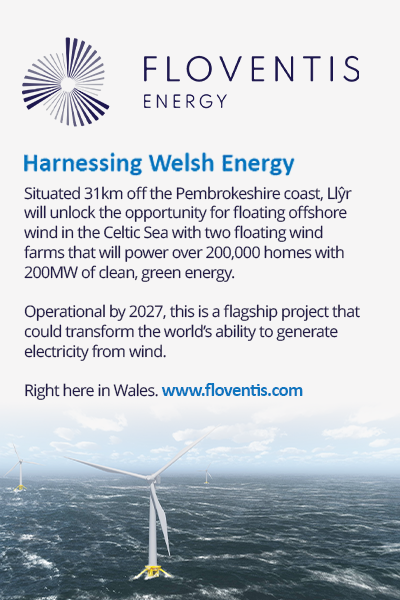Plans for gigawatt-scale ‘green’ hydrogen production in the Celtic Sea, using wind power to convert sea water into the useful ultra-low carbon fuel are beginning to gather momentum.
Green hydrogen will play a major role in our ambitions to reach net zero targets and is particularly relevant for those sectors in industry, mobility and energy that cannot be decarbonised by electrification.
Green hydrogen has many uses being versatile and can be applied in different sectors. It can be converted back into electricity through re-electrification in gas turbines, engines or fuel cells. It can also be used to produce various types of synthetic fuels like e-kerosene, e-methanol and e-gasoline, which support the decarbonisation of the aviation, shipping and transportation industry.
It’s likely that our electricity grid capability is some time away from being able to harness the power of the Celtic Sea, therefore, developing a floating wind resource that produces green hydrogen rather than just electricity seems a no brainer.
Green Economy Wales editor Mark Powney, spoke with Guto Owen, Co-Ordinator of HyCymru, the Wales Hydrogen Trade Association, about the opportunities for hydrogen as a result of offshore floating wind developments in the Celtic Sea.
The port of Milford Haven, the UK’s largest energy port, is likely to transition into the UK’s capital for green hydrogen production, due to its strategic role in the development of the Celtic Sea. It’s also important to point out that the port has an existing extensive pipeline network, capable of transporting clean green hydrogen across the country.
Wales & West Utilities recently announced plans for a major hydrogen pipeline in South Wales and if built, will pave the way for commercial scale hydrogen production in Pembrokeshire Port Talbot and in the Celtic Sea, whilst also providing infrastructure for energy intensive industrial customers to begin fuel-switching their processes to hydrogen in the 2030’s or earlier.
Steve Edwards from the Port of Milford Haven, explains how Wales has a clear head start in terms of distribution through a world class existing gas grid which can transport gas across all areas of the UK. Steve explains that a process is underway to future proof this network for the distribution of hydrogen.
It’s down to the economics says Simon Cheesman, from the Offshore Renewable Energy Catapult.
“The Celtic Sea has an enormous amount of energy and probably more than we can economically draw out as electrons to bring ashore as electricity. There is huge interest in hydrogen as another energy vector that could be developed alongside the development of offshore floating wind.
Key to the success of the sector will be having significant hydrogen users such as public bodies, transport and shipping.”
Jay Sheppard of Marine Energy Wales agrees that hydrogen is going to be an important part in our future energy mix, but is sceptical to the extent to which we could be exporting hydrogen from the UK and thinks the internal market is the more likely option.
“A lot of nations are looking to import hydrogen, but I think those that are looking to import hydrogen are likely to do it from areas where they're producing hydrogen, from equatorial solar. That's what looks most likely to be the cheapest source of hydrogen for now.”





